Suit Work for Police Dogs
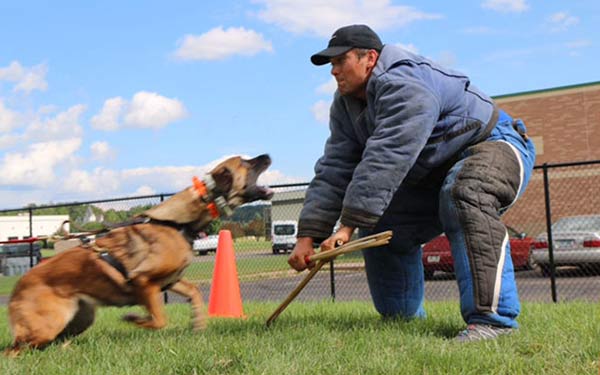
Foreword by Ed Frawley
I met Kevin Sheldahl in 1984 at a police K-9 school in Kansas. We have been good friends ever since. Kevin is a retired police K-9 handler. He became a K-9 Instructor and an International Police Dog Judge. Kevin's company K-9 Services runs 6-week police K-9 courses in which police officers learn how to become new K-9 handlers. To date, he has run 70 6-week courses and trained over 1,200 K-9 handlers. I don't know of another dog trainer that has Kevin's experience and knowledge of police service dogs training.
Look, I see the pics put up on social media, used in advertisements, and displayed as if they are trophies. Of course, after years of doing this I see all of it with a critical eye. So, here is what I see too much of.
Biting behaviors on the lower portion of the arm, over and over. Biting behavior that is formulated around only floppy prey work on the ground. All bitework formulated around the suit and all work formulated around biting.
The above list is certainly not complete. It is a short list that has been bugging me. I have just returned from two conferences where the subject has been working police dogs and military dogs. The videos, the photos, the vendor booths, full of suit work. As if that defined a police dog! There are multiple sports out there that use the suit. Each has a texture of its own. I'm writing this while in route to see two of them. KNPV and NVBK, both Championship levels. It will be fun. These sports have tons of rules or at least convention for the decoys and the dogs and some of them pertain to the suit or at least how the suit is used and even where a dog bites a decoy on the suit. As a competitive sport or program there needs to be rules.
There are also some convention and rules in police work. Arrest and control, of combatives for police, or defensive tactics, or intermediate control techniques depending on where you got your knowledge (and for those that practice your skills) introduce some common concepts into the police work that conforms to legal concepts and a large amount of empirical evidence on how to control people. Yes, with police dogs we work towards this as well even though the dynamics makes it sometimes a difficult proposition.
The plan is: control without more damage than is necessary as a plan. The areas we strike with a baton or other impact tools…the larger areas such as the shin, thigh, calf, forearms and upper arms, and back of arms still are good locations for other techniques such as kicks and strikes.
So, what does this have to do with dogs training? Simple, the dogs must be able to use those same areas. To do this they must practice frequently doing so. Sometimes in the dynamics presented by the bad guys, dogs bite in other areas…….but in training we should work on those large muscle groups. Thighs, buttocks, calves, back and front of the arms, this is in concert with other uses of force. We can't expect dogs to do things like joint locks……because they have no thumbs! They have one highly used tool. Their mouth, which is used to play, groom, make communicative noises, chew toys and food, grasp items….including simulated and real suspects, as well as taste and smell, and pretty much everything the dog is involved in. So we teach them to use this all in one tool to help us control bad guys at times. But, dogs are also creatures of habit. Or, to put it in simple terms, dogs do what they do. If the only thing they know is to bite the lower arm of a suit, well that's what they are going to do.
When the decoy communicates to the dog (yes communication is happening in bitework) that the place to bite is the end of the sleeve through presentation and lack of skill the dog will expect this. When they don't get it….failure. Now I'm going to confuse this a bit by saying biting is a necessary skill and the dogs must understand multiple areas to grasp but they also need a bit of understanding that any where is acceptable in a pinch. Guess what, this doesn't happen in a suit. It comes from frustration, civil work where the decoy confronts and flees or just flees with no equipment. Frustration happens when a dog is worked in a muzzle instead of biting.
My last patrol dog went months without teeth meeting sleeve or suit. Civil work and muzzle work for him. The advantages are many. Anyone can run from your dog, frustration by non-decoys is certain to prevent decoy - canine communication that is unintentional (such as the way a decoy moves, the inadvertent communication of where to bite even if it is in the right places). Yes, sometimes the uneducated decoy is the best training your dog can receive as long as he's ready for it.
A good friend and colleague called me a while back. He was supervising a good sized K-9 program and had recognized that the last two dogs they aquired were grabbing clothes and not really strongly engaging the suspects. None had put up a great fight yet but it concerned him. Solution? The prescription was simple, keep your training up but take away the suits and sleeves and hidden sleeves from the entire unit. Do this for 3-4 months and see the results. Well of course we saw a huge improvement. It is conceivable that with a bit more experience under their belts and a suspect or two that evoked the need to combat the dogs would have improved anyway. But, we use the dogs to help control suspects…..very little control can be had by pulling on clothing that tears and provides zero compliance.
Try getting that equipment out of the scenarios you run for training. Use frustration and natural movement to train your police dogs. It pays dividends!!




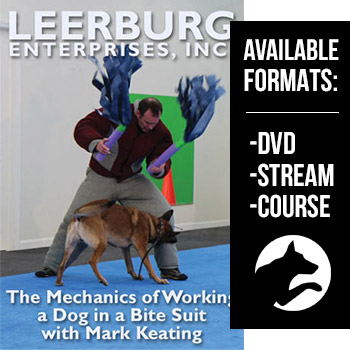

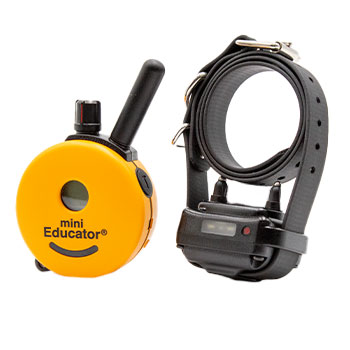

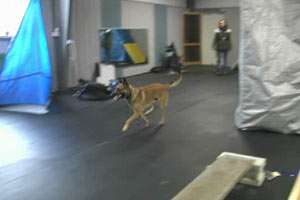

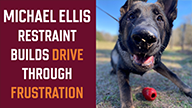
Ask Cindy.